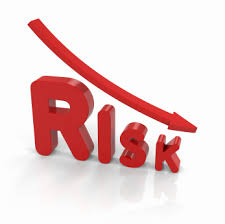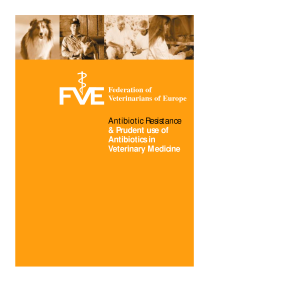My friend Ronald Doering, the first president of the Canadian Food Inspection Agency, writes persuasively in this Food in Canada column last week:
 In September, there were several media reports of a survey by 3M that found that 32 per cent of Canadians are “skeptical of science.” The results were universally treated as “worrisome,” “alarming” and “depressing” because such a lack of trust in scientists might skew policy discussions to non-science considerations (bad) and perhaps, as well, undermine funding for scientists (very bad).
In September, there were several media reports of a survey by 3M that found that 32 per cent of Canadians are “skeptical of science.” The results were universally treated as “worrisome,” “alarming” and “depressing” because such a lack of trust in scientists might skew policy discussions to non-science considerations (bad) and perhaps, as well, undermine funding for scientists (very bad).
As readers of this column over the years will know, I have a different view. While, of course, it depends on what you mean by “science,” generally my opinion is that everyone should be more skeptical of science. I’m not saying that science is not important. CFIA scientists and their 10 laboratories are critical to the work of the agency. We can never have too much good science.
What I am saying is that there are many reasons why ordinary citizens, and especially consumers, should always be skeptical of science:
- Most science is a lot more uncertain than is usually acknowledged. In food and nutrition science, for example, you name the issue and I can give you conflicting science. Over the years in this column, I have demonstrated vastly conflicting science on, for example, genetically engineered foods, food irradiation, the safety of BPA in food packaging, the safety of farmed salmon, the safety of water fluoridation and food additives. We have seen that Canada’s top two scientists on the safe level of salt in our diets disagree so intensely that they routinely resort to vicious name-calling. Canada and the U.S. consider the science on folic acid so clear that they require mandatory fortification of certain foods, while every EU country interprets the science to be so dangerous that they refuse to fortify; both groups insist their policy is “science-based.” It is illegal to sell raw milk in Canada and Australia but legal in England, Wales and Northern Ireland; both sides insist their policies are “science-based.” Nutrition science vacillates wildly. With such pervasive uncertainty, isn’t it just common sense to be skeptical?
- Consumers get their science information on food and nutrition from newspapers, magazines, television and social media, none of which have trained science reporters anymore and all of which trade in alarmist “investigations,” food company bashing, celebrity advice and 45-second clips. Most consumers cannot understand most food labels. Health claims are more about marketing than health. Scientific illiteracy and innumeracy abound. As Mark Twain observed, if you don’t read magazines and newspapers you are uninformed, and if you do, you are misinformed. (Of course, this column is an exception). In the face of such widespread misinformation, isn’t it just common sense to be skeptical?
- One of the most pervasive myths is that science and policy can be separated. When I was president of Canada’s largest science-based regulator, I dealt regularly with scientists who were seemingly unaware of how much their science advice was imbued with unstated policy considerations. Policy implications enter into the risk assessment at virtually every stage of the process. Moreover, in our system, scientists don’t make policy. After the scientist does the science-based risk assessment, elected politicians and their senior advisors carry out the policy-based risk management responsibility by weighing the science with the economic, political, legal, environmental, and ethical considerations. This is not the politicization of science; this is evidence-based policymaking. These two separate functions are often conflated and the outcome presented as driven purely by science. Isn’t it just common sense to be skeptical of this “science?”
- A scientist friend recently highlighted another reason to be skeptical. The university system still insists that professors publish or perish, which accounts for why so much published science is both unread and unreadable, contributing nothing of value to the public that pays for it. It is certainly common sense, he says, to be skeptical of this science. Given the growing recognition of the importance of diet for health and the growing threat of foodborne illness, we need more and better science to aid in policymaking. Having said that, the public should always be skeptical of the science that comes their way.









.jpg) they have to sign onerous supplier warranty agreements and open up their businesses to multiple audits. But these systems and their audit schemes have gone through some significant growing pains that have served to seriously undermine their credibility.
they have to sign onerous supplier warranty agreements and open up their businesses to multiple audits. But these systems and their audit schemes have gone through some significant growing pains that have served to seriously undermine their credibility..jpg) numbers — that were quickly consumed, often with other produce. Microbiological testing proved quite unhelpful so investigators had to rely primarily on epidemiology. Pressed for “results,” both cases had regula¬tors initially jumping to the wrong conclusions, destroying in their wake the livelihood of many innocent people and seriously undermining the credibility of government food safety regulators. Both cases prove the “Iron Law of Food Safety Outbreak Investigations”— after the fact academ¬ics and the media will criticize government regulators either for overreacting or under-reacting.
numbers — that were quickly consumed, often with other produce. Microbiological testing proved quite unhelpful so investigators had to rely primarily on epidemiology. Pressed for “results,” both cases had regula¬tors initially jumping to the wrong conclusions, destroying in their wake the livelihood of many innocent people and seriously undermining the credibility of government food safety regulators. Both cases prove the “Iron Law of Food Safety Outbreak Investigations”— after the fact academ¬ics and the media will criticize government regulators either for overreacting or under-reacting. (1).jpg) have to grapple with communicating this uncertainty to a generally scientifically illiterate consumer who simply expects retailers to only sell safe food and expects the regulatory system to guarantee it.”
have to grapple with communicating this uncertainty to a generally scientifically illiterate consumer who simply expects retailers to only sell safe food and expects the regulatory system to guarantee it.”.jpg) finally been given the power of mandatory recall after a Hearing (Canada has had this since 1997, without the right of a Hearing); and the FDA has the right to hold food products it has reason to believe are adulterated or misbranded (Canada has always had this).
finally been given the power of mandatory recall after a Hearing (Canada has had this since 1997, without the right of a Hearing); and the FDA has the right to hold food products it has reason to believe are adulterated or misbranded (Canada has always had this).  foods from "farm to fork" and a lack of incentives to keep food safe along the "farm to fork" pathway."
foods from "farm to fork" and a lack of incentives to keep food safe along the "farm to fork" pathway.".jpg) perfect. There’s no zero risk. But I’m not aware of any study that demonstrates in any persuasive way that any country has a better food inspection system than Canada.”
perfect. There’s no zero risk. But I’m not aware of any study that demonstrates in any persuasive way that any country has a better food inspection system than Canada.”